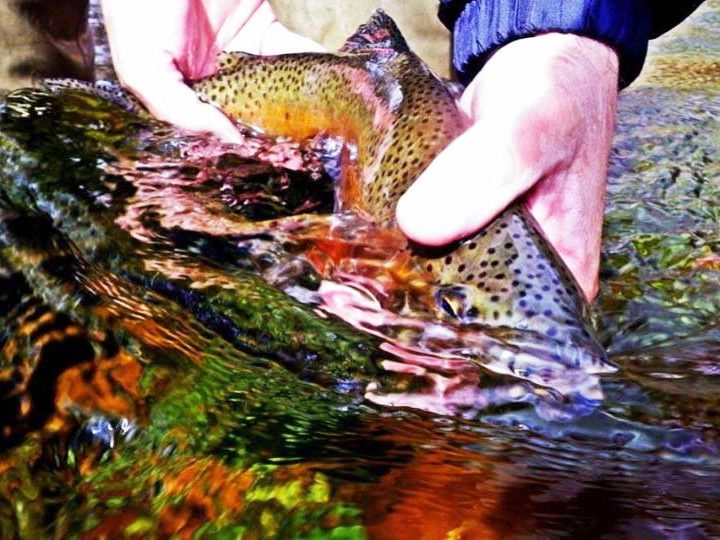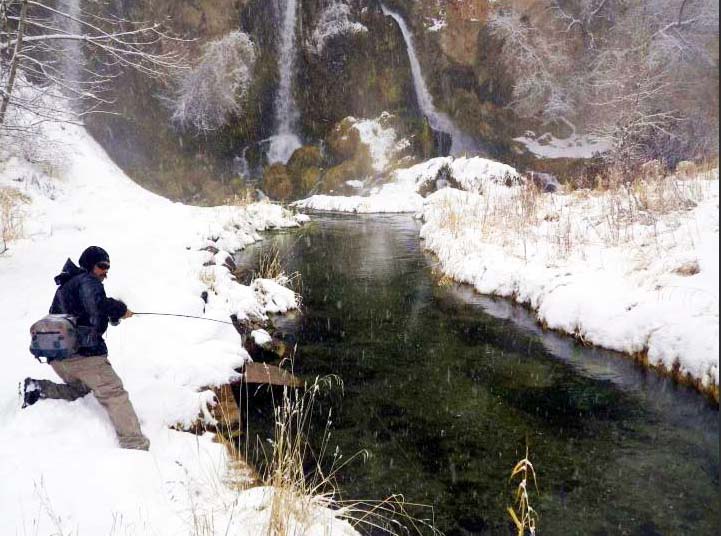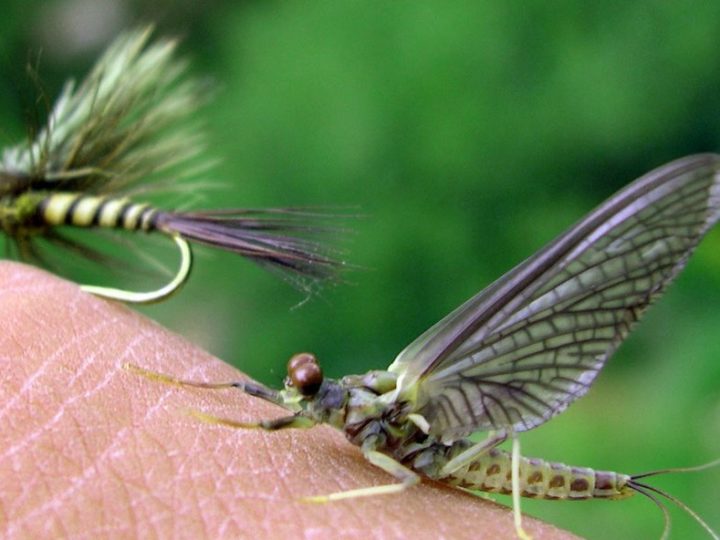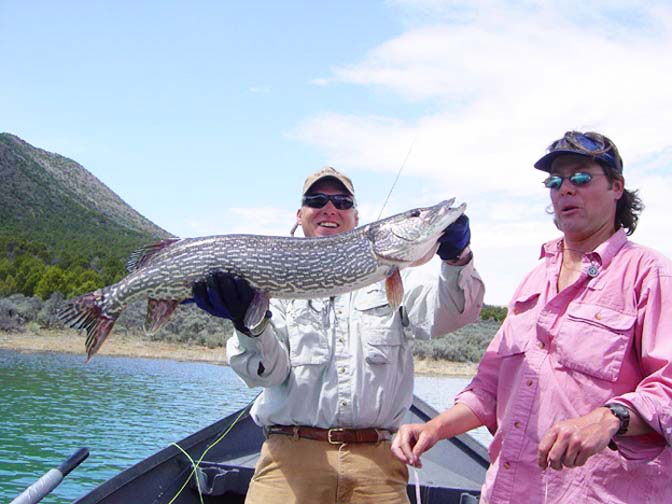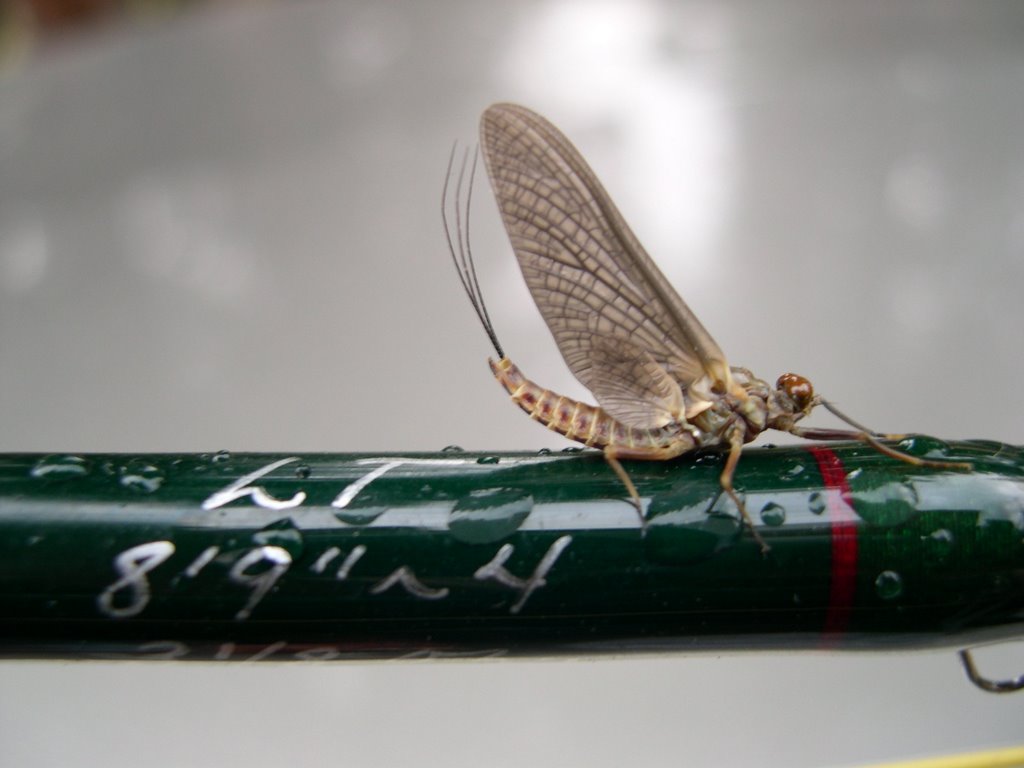
From late June all the way into October, anglers from around the country flock to the Roaring Fork Valley in search of one of the West’s largest mayflies, the green drake. Due to the hefty size of this mayfly, fish throw caution to the winds as they voraciously feed on these delicious insects. The green drakes of the Roaring Fork Valley are unique in the fact that we have fishable hatches of drakes for about four months annually. Other western fisheries have good drake hatches as well, although they typically only last for a week or two. We have three main species of green drakes, the ephemerellidae grandis, doddsi and the coloradensis. In addition, we also have the smaller green drake cousin the flavilinea. One does not need to know the Latin names of these insects as they are all similar in appearance and inhabit similar types of water. Flies for one species of drake will fish equally well for another species.
Green Drake nymphs prefer to live in fast-water environments and are perfectly built for that habitat. These nymphs belong to the clinger-crawler families and are seldom swept away by the river. As the nymphs get ready for emergence, they make the transition to more moderate and slower moving waters. Green Drake nymphs are lousy swimmers, so they often need to make multiple attempts to reach the surface and emerge. It’s during this struggle that they are extremely vulnerable to trout. Our favorite pattern to imitate the Green Drake nymph is a pattern that was invented in the Roaring Fork Valley, the famous 20 Incher. This versatile pattern not only imitates Green Drake nymphs very well, but it also closely resembles the darker colored stoneflies, prolific at this time of year as well. Mike Mercer’s realistic Poxyback Green Drake is another effective imitation, as are old stand-by’s like the impressionistic Brown Hackle Peacock. Many of the nymphs split their wing cases open below the surface of the water. Since their wings may protrude while they are on or near the river’s bottom prior to surfacing, winged emerger patterns such as Shane Stalcup’s Winged Drake Emerger or Quill Wing Drake Emergers are effective dropper patterns, whether fished below your drake nymph or drake dry fly. Often times, especially on the Frying Pan River where food is plentiful, fish will not be willing to move far to take a drifting nymph. When this happens, precise dead drifts are mandatory for effective nymph fishing .
The Green Drake adults or duns of the Roaring Fork Valley are unique in that they are actually not very green in body color. Green drake patterns that are effective on the Henry’s Fork of the Snake River, for example, are not nearly as effective on the Roaring Fork, Colorado or Frying Pan Rivers. The body color of the duns we typically see is more gray-tan/olive than green. Because of that, the majority of the flies we find effective are often called “Colorado Green Drake”, referring to that unique body color. Matching body color is certainly more important when fishing green drakes during midday hatches like those we typically find on the Frying Pan and periodically on the Roaring Fork.
On the Roaring Fork and Colorado Rivers, most of the green drakes hatch at dusk in the fading light of the evening hours. During the dubbed “lightning rounds” body silhouette and low maintenance flies (high floating flies tied with materials that don’t need constant attention with floatants) far outweigh body color. After all, you want to be fishing, not pampering your flies with floatants. As the old saying goes, ‘you can’t catch fish if your flies aren’t in the water’. After the sun sets over the mountains, we rely on impressionistic drake silhouette styles of flies with large white wings we can see in low light. Examples are H & L Variants and Royal Wulffs. Size 10’s and 12’s are ideal to imitate our green drakes. Patterns tied with foam extended bodies, like Ben Furimsky’s BDE Drake (the best dry ever), are also highly effective. They make a superb choice when you are fishing dropper patterns, due to the patterns high flotation.
Many green drakes never actually make it to the dun stage and get held captive or crippled in the surface meniscus. Green drake cripple patterns are another viable option here for fish that are focused on the struggling emergers. Most often we fish cripples as a trailing fly below a higher floating green drake imitation. Green drake duns on our valley waters have wings that look disproportionate in relation to their body size, often measuring 1 ½ to 2 times their body length. Most often they display a smoky-dun coloration. Green drake spinners are of no importance to the fisherman since they fall during the wee hours of night.
Kirk Webb 2006
